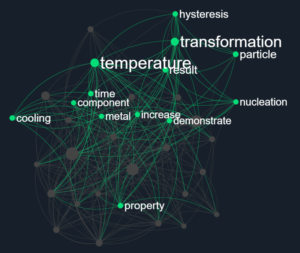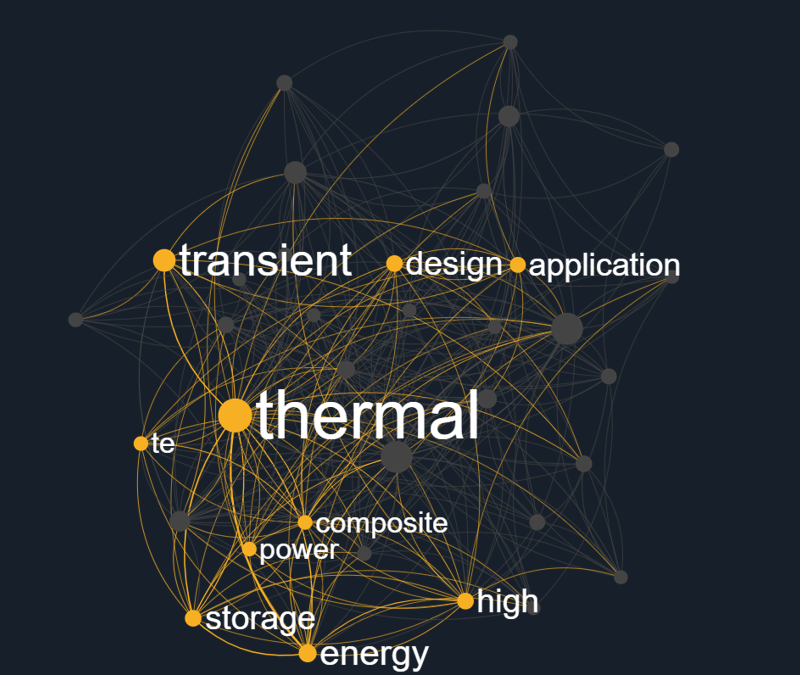The research foci of our group (1. Phase transformations, 2. Phase Change Materials, 3. Transient Thermal Systems, and 4. Engineering Education) are illustrated below using network maps compiled from abstracts of publications over the previous 5 years.

1. Phase transformations occur when one form of a material (for example, one crystal structure) becomes more stable than the current form. Phase transformations underpin many modern technologies (optical and phase change memory, shape memory materials) and industrial processes (casting, refrigeration and heat pump cycles). In some cases, materials easily convert back and forth between different phases – in other cases the transitions may be sticky.
We seek to understand why phase transformations in materials demonstrate certain behaviors, and to develop control vectors to influence their behavior.

2. Phase Change Materials are used to capture and store heat (thermal energy) that otherwise would be lost, to increase the efficiency of a system, or to protect it from thermal failure. Phase Change Material Composites allow us to tune the delicate balance between energy storage density and cooling power.
We develop tailored phase change material solutions for demanding energy storage applications. We use machine learning, numerical simulation, and simple analytical expressions to design tools to guide composite phase change material design, which rapidly converge on optimal phase change material composite structures.

3. Transient Thermal Systems undergo rapid heating or cooling, which can result in failure of systems or inefficient operation. Transient thermal systems span many orders of length scales from electronic devices (10’s of nm) to data servers and buildings (100’s of m). The common feature is a need to develop material solutions that match the dynamic transients which define the problem.
We use rigorous simulations and experiments to measure heat transfer over relevant timescales and to develop material solutions for these problems.
4. Engineering Education. The role of materials as technology enablers has become increasingly prominent in recent years, as demonstrated by the fourteen Grand Challenges for Engineering posed by the National Academy of Engineering. To address these and future challenges, universities must improve their capability to effectively train the next generation of engineers. We have investigated the effectiveness of different engineering pedagogies at both the UG and Graduate level, focusing on:
- Use of video lectures to enhance learning outside of class.
- New models of UG and Graduate education.
Dr. Shamberger is a proud senior investigator in the NSF-funded Data-Enabled Discovery and Design of Energy Materials (D3EM) graduate program at Texas A&M, as well as the NSF-funded Multifunctional Materials Research Experience for Undergraduates (REU).
